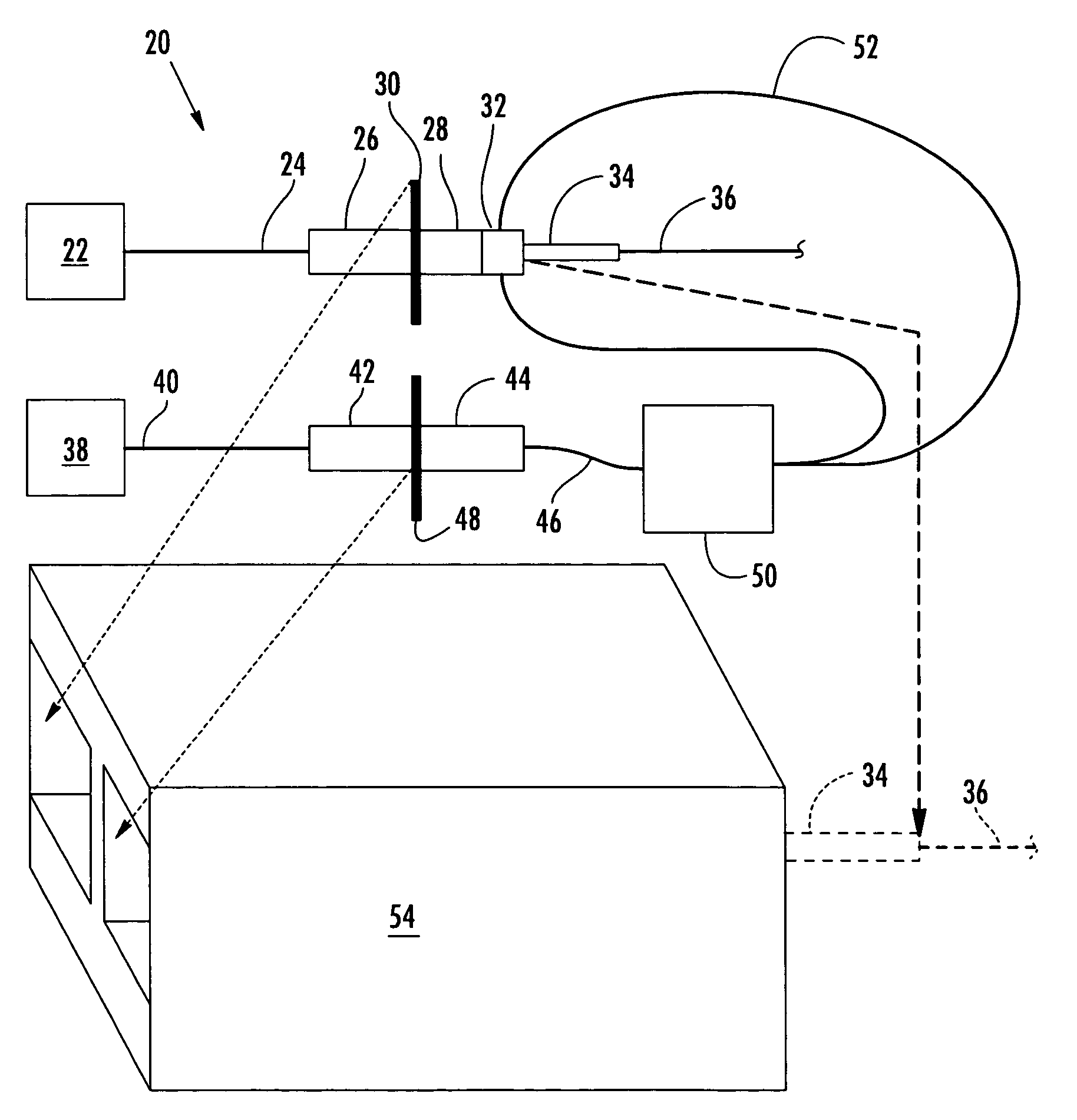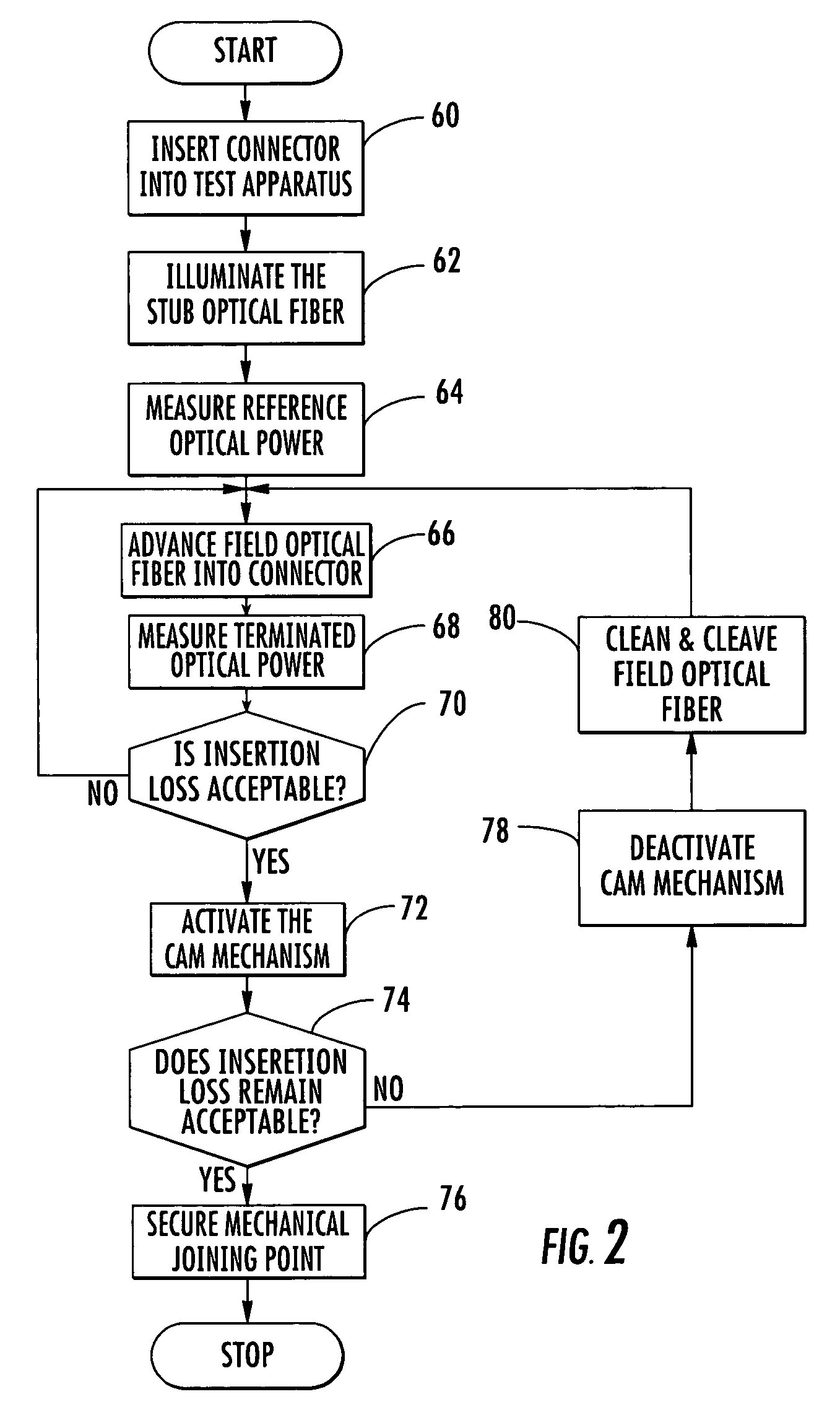Methods and apparatus for estimating optical insertion loss
a technology of optical insertion loss and method, applied in the direction of optics, optical elements, instruments, etc., can solve the problems of diminishing the glow of the non-opaque portion of the connector, and achieve the effects of less controllable test conditions, high precision and cost effectiveness, and rapid and accurate measurement and analysis
- Summary
- Abstract
- Description
- Claims
- Application Information
AI Technical Summary
Benefits of technology
Problems solved by technology
Method used
Image
Examples
Embodiment Construction
[0019]Reference will now be made in detail to the present preferred embodiments of the invention, examples of which are illustrated in the accompanying drawings. Whenever possible, the same reference numerals will be used throughout the drawings to refer to the same or like parts. A field-installable mechanical splice connector operable for terminating a field optical fiber to the connector is shown herein as an exemplary embodiment for estimating insertion loss at a mechanical joining point. However, it should be understood that the methods and apparatus of the present invention may be applied to any mechanical joining point, such as, but not limited to, any mechanical joining point between adjoining optical fibers wherein light energy can be transmitted along at least one of the optical fibers and the optical power at the mechanical joining point can be detected, collected and measured.
[0020]Referring to FIG. 1, the present invention provides a test apparatus 20 for estimating ins...
PUM
 Login to View More
Login to View More Abstract
Description
Claims
Application Information
 Login to View More
Login to View More - R&D
- Intellectual Property
- Life Sciences
- Materials
- Tech Scout
- Unparalleled Data Quality
- Higher Quality Content
- 60% Fewer Hallucinations
Browse by: Latest US Patents, China's latest patents, Technical Efficacy Thesaurus, Application Domain, Technology Topic, Popular Technical Reports.
© 2025 PatSnap. All rights reserved.Legal|Privacy policy|Modern Slavery Act Transparency Statement|Sitemap|About US| Contact US: help@patsnap.com



